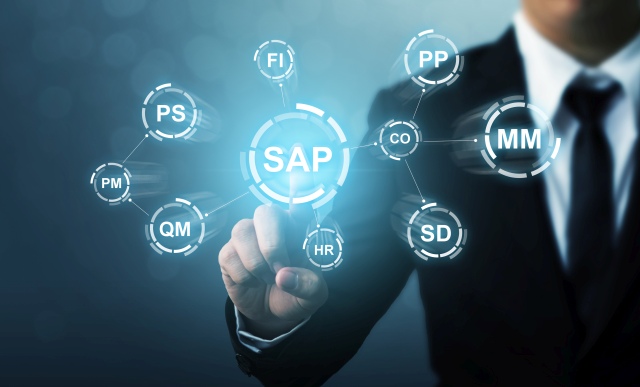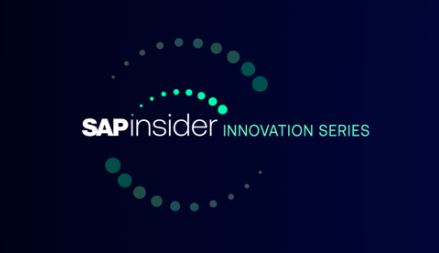SAP ERP Human Capital Management (SAP ERP HCM) can help organizations streamline and standardize HR processes and services through a centralized delivery channel or shared services organization. Find out how shared service centers are deployed within SAP’s own HR organization.
Key Concept
Interaction Center functionality available with the SAP Enterprise Resource Planning (SAP ERP) and SAP Customer Relationship Management (SAP CRM) applications can help synchronize communications across all channels and touch points, decrease service costs, improve business processes, increase customer satisfaction, and drive revenue. HR process efficiencies and ROI measures are realized through improved employee interaction, process execution, and cost control.
Employee Interaction Centers (EICs) often require access to confidential employee data, so the HR department usually operates them in a shared service model for multiple business units across an organization. EICs can further connect with other departments and external organizations, rapidly providing customers, partners, and employees with helpful, consistent information.
As employees demand more control over work-related transactions and personal data, companies must act to provide systems that quickly meet employee demands while enabling quick, efficient processes that do not erode employee productivity levels. EIC software available with SAP ERP and SAP CRM addresses these demands by allowing companies to transform HR departments into a strategic, service-oriented response center. By using a centralized delivery channel or shared services organization, you can streamline and standardize HR processes and services such as employee policy and procedure inquiries, changes to employee master data (address, emergency contact, number of dependants), and the management of work and life events such as international assignments, terminations, and leaves.
EIC provides users with the tools required to support employee needs, including multi-channel contact integration, communication, contact management and activity tracking, and contact history. The application also allows agents to execute “on-behalf-of” transactions in the Employee Self-Service (ESS) module to assist employees in changing employee HR master data. In addition, EIC includes a central repository (inbox) that allows employee-facing agents to prioritize and support employees according to service-level agreements (SLAs) or processing guidelines. The inbox structure enhances the collaboration between employees and the appropriate HR support staff to ensure proper levels of response to any inquiry. Combined, these capabilities streamline standard processes to support HR business objectives such as reducing HR costs per employee and the reduction in time spent on HR-related inquiries.
This article explains both the technical architecture and functionality of the shared services organizational model, including the employee interaction center. It also provides a best practices look at HR shared services, using SAP’s business model as an example. Finally, the article provides a general overview of the key features within EIC.
Working Together: The Organizational Model
The shared services organizational model that SAP follows is comprised of HR Business Partners, SAP Consulting, and EIC. The HR Business Partners know the business, enable managers’ success, focus on organizational effectiveness and productivity improvements, and minimize administrative responsibilities.
SAP Consulting has HR functional expertise in the areas of recruiting, compensation, benefits, training, and education. The consulting organization is responsible for HR metrics, reporting and analytics, building and maintaining SAP’s consulting capability, and designing and implementing standardized, world-class HR solutions globally.
EIC is employed to support repetitive and scalable transactions. It delivers consistent messaging of HR policy and procedures, streamlines HR processes, is the face of HR to employees, leverages technology for data and process integrity, and is an excellent feeder group for a career path in HR.
All of these shared services focus on aligning HR policy, procedures, and tools to standardize the employee and management experience and drive internal efficiencies. By servicing transactions and processes through a shared services model, HR professionals are free to improve internal HR practices and better align HR strategy with overarching business goals.
SAP’s Interaction Center WebClient (IC WebClient), available with SAP CRM 2005 as well as SAP ERP 6.0, allows SAP contact center agents to focus on the inquiries and transactions of targeted stakeholders (such as active employees, former employees, SAP applicant, employee family member, SAP vendor, or employee-vendor), providing access to key information through a single, unified application. To learn about the two deployment options for running IC WebClient, refer to the “SAP Interaction Center Deployment Options” sidebar.
Through their desktops, contact center agents are able to access HR master data, manage contacts, conduct knowledge searches, and review employee interaction history. This information access enables agents to deliver more personalized service and ensure consistency of information regardless of contact center locale. Figure 1 shows an employee search in IC WebClient, and Figure 2 displays an employee’s interaction history EIC with SAP CRM.

Figure 1
SAP CRM EIC: Employee search results (displays employee’s personal details and provides actions and drill-down options to other tools)

Figure 2
SAP CRM: Employee interaction history
EIC Tickets
EIC supports and automatically captures the management of inquiries, or tickets, in the service ticket log for any agent to review and access for historical purpose. The benefits for an HR representative include centralized employee inquiry information, mobile access, use of tickets for tracking the interaction history, and improved security (employee identification).
Upon first contact, the system creates a service ticket to store the information concerning the request. Service tickets include details of an inquiry such as the employee’s name, reason for inquiry, channel of inquiry (phone, email, other), ticket creation information (agent name and date), ticket completion information (agent name and date), and summary of all conversations or copies of all correspondence.
As many processes in the contact center require multiple steps which different processing organizations or regions support, you can create multiple service tickets. Using the functionality for master tickets allows agents to more efficiently manage the process. The master ticket better organizes these multi-step processes by grouping numerous service tickets, providing the overall status of the process including the start and completion dates as pulled from the opening of the first assigned service ticket and completion date of the last completed service ticket assigned. In addition, this functionality provides the customer with only one reference point, as in a standard service ticket model, and leads to streamlined communications with the center. Reporting derived from the master ticket allows HR to determine the average processing time per transaction type and identify areas for potential efficiency improvements (Figure 3).

Figure 3
Master ticket with assigned service tickets
Reporting and Trend Analysis
The SAP ERP HCM application also allows HR decision-makers to access and sort key employee data for advanced reporting. They can easily identify trends in employee data by isolating smaller segments, such as by region or subsidiary. This insight allows the company to proactively address outstanding concerns with specific employee groups so they can focus on their primary tasks and return to standard productivity levels. Feedback specific to HR tools, policies, and processes provides the opportunity to improve HR’s portfolio to better meet the needs of employees.
EIC in Practice at SAP
SAP’s HR department has three contact centers: one in the US that serves 10,000 employees across the Americas; one in the Czech Republic that serves 23,000 employees across Europe, the Middle East, and Africa; and another in development in Singapore that will serve 7,000 employees in the Asia Pacific Japan region.
Using the current version of SAP CRM in conjunction with SAP ERP HCM allows SAP to realize an international HR shared- services environment that supports more than 39,355 employees in subsidiaries in over 50 countries (data as of December 31, 2006). The following examples illustrate how SAP employs its EIC solution to maintain a strategically-focused HR Contact Center that is aligned with overall business goals:
Contact Center Business Scenario
At SAP, an employee preparing for an extended maternity leave calls the HR contact center for guidance in preparing the necessary paperwork. The contact center agent leverages the internal portal to walk through the company’s leave policy and to answer inquiries using the employee’s personal data. For instance, the agent can access the employee’s tenure and vacation balance to educate the employee on the extent of her leave.
After the birth, the employee will call the HR contact center to officially notify the company that she is on leave, allowing the agent to access her vacation records, making appropriate adjustments and beginning notification and approval workflows with the employee’s manager.
Benefits from EIC
Embedded integration within SAP EIC software allows SAP HR to execute on its global strategy for employee inquiries and transaction management by connecting representatives from HR and finance with data available through SAP ERP. Regardless of location or line of business, agents can access the same up-to-date information. The benefits of this global HR instance include standardized and efficient processes, scalability across regions, global reporting, and reduced infrastructure costs from supporting a single application. As inquiries are documented within the contact center, HR contact center management can analyze trends related to inquiries and make required alterations to processes or communication efforts on behalf of other HR units.
Prior to implementing shared services at SAP, employees and other stakeholders could only contact HR professionals within their own region, often experiencing slow, and sometimes confusing responses. In contrast, the global EIC functionality has the flexibility to support all employees’ HR inquiries across all regions.
Giving employees the option to contact an agent at the center, even if the employee is traveling in another region, provides employees with quick issue resolution regardless of geography. The global deployment of EIC enables any center agent to record the contact and forward unresolved tickets to the appropriate region and team to support the request.
Addressing Employee Concerns
Reviewing inquiries captured during the annual benefits open enrollment or performance evaluation processes, the contact center at SAP can advise the process owner on areas of concern to employees. This way, improvements to employee communications or enhancements to tools can be made. Through service tickets, SAP is able to identify contacts that require an action on the part of an agent, such as sending a form or updating employee master data. SAP uses this information to identify further areas for technology deployment. The volume of inquiries also supports the prioritization of technology projects and the creation of business cases for budget approval. EIC maintains other information for contacts to allow for further detailed reporting including ticket status, contact channel, categorization of service, identification of inquiry or transaction, and processors.
Employee Interaction Center Features
EIC as delivered by SAP CRM and SAP ERP contains the following capabilities:
Communication integration: EIC serves as a single point of contact supporting multiple communication channels such as telephone, email, letter, fax, or chat. For connecting to external communication software, IC WebClient uses the integrated communication interface (ICI). The ICI passes the data via the business communication broker (BCB) to SAP applications such as the IC WebClient. Communication management software refers to third-party software products that manage communication channels such as phone, email, and chat. ICI interfaces with these external software components through certified XML and simple object access protocol (SOAP).
Contact management: HR staff can manage and process information (contact history, for example) about individual employees across all touch points, whether the employee is asking about a standard HR process or a more complex issue. Agents can view previous interactions to provide additional clarification consistently, reducing the expensive process of employee answer shopping.
Activity tracking: Staff can record and process all procedural steps and follow-up activities, supported via flexible status handling. Agents can classify activities against the company’s own product and service catalog to prioritize and route them easily to the different levels of support (first, second, and expert level) within the shared services organization.
Figure 4 shows a request of employee Jo Sallis asking for compensation for working on a public holiday. The agent has categorized the request accordingly, which is the basis for determining solutions, email answer templates, and routing of the request to the appropriate expert if required. The two views on the lower part of the screen show that employee Jo Sallis works for the department Manufacturing Unit 08. From a shared service center point of view, Jo’s department is the partner that receives the service (Ship-To Party/ServiceRecipient). Based on this, the system can charge his department for the delivered service (partner function Bill-To Party and Payer). The solution accesses the SLA and contract determined by the request, and the time recording information entered by the agent, to process the employee request.

Figure 4
Employee request in EIC for SAP CRM 5.0
EIC also supports charging services to the department of the employee on a contract basis. Even if the services are not directly charged to other departments, this information is still valuable because it controls the costs generated by the various departments that consume EIC services.
Knowledge management: Agents can access enterprise intelligence (such as a SAP’s Text Retrieval and Information Extraction engine [SAP TREX]-based search in the CRM solution database) from their desktops. This expedites employee inquiries relating to specific legal or corporate regulations. HR staff can quickly and easily search for solutions based on corporate policies and procedures, frequently asked questions, and third-party knowledgebases, thus increasing the number of requests resolved on first contact.
Alerts: Alerts automatically notify HR staff of open requests, employee status, or other relevant business criteria, saving response time. Broadcast messages allow managers to apprise their staff of pertinent HR information. Both can be processed asynchronously and displayed to the agent at real time, independent of roundtrips triggered by the user.
Transaction launcher: A transaction launcher triggers any SAP transactions or third-party applications that staff must perform. A technical team can customize a transaction launcher to meet job requirements. Using this launch pad, HR personnel can easily access all the transactions necessary to respond to an employee request, including HR master data maintenance files, payroll transactions, and any other transaction your agents need.
Analytics: Decision makers can easily see trends in employee inquiries, measure the impact of corporate policy changes, track the number of employee interactions by communication channel, and evaluate performance and behavior of interaction center personnel. These capabilities help identify opportunities to increase efficiency and employee satisfaction, optimize the interaction center’s efficiency, evaluate ROI, and ultimately decrease costs.
Figure 5 gives an example of a launch transaction (PA30). The employee master data transaction is integrated into the IC WebClient screen. The personnel number of the employee who had contacted the EIC was passed along with the launch transaction as a variable so that the correct record was opened up automatically. Technically, this launch transaction was set up as part of the IMG customizing. A wizard allows the call methods of business object repository (BOR) objects of the current system or a remote system. The SAPGUI screens of the called transactions are converted by the internet transaction server (ITS) to HTML and you thus can display them in IC WebClient. The wizard-driven approach sets this up without having to manually write or adjust any code. However, some cases require custom code. For instance, the system might need to transfer custom fields and variables or execute custom methods of business objects. You can implement this without modifications in the handler classes of the transaction launcher and by implementing custom business objects and methods in the BOR.

Figure 5
Access HR data and processes in EIC in SAP CRM 2005
SAP Interaction Center Deployment Options
SAP delivers two deployment options for running IC Web-Client — SAP ERP 6.0 and SAP CRM 2005.
Depending on the system landscape and business process design requirements, using IC WebClient with either application provides users with two methods to operate an HR service delivery. IC WebClient with SAP CRM 2005 has been available as a standard solution since 2005. The integrated IC WebClient is available as standard solution as of the release of SAP ERP 6.0 and has been enhanced with the first SAP enhancement package for SAP ERP, which became available in December 2006.
As a rough guideline for the decision as to which solution is more appropriate, companies should consider certain principles. The CRM solution is especially applicable for the business process outsourcing (BPO) environment as well as for users following a shared services strategy integrated with other applications (such as Financial Accounting for example). EIC software integrated in SAP ERP is a part of the SAP ERP installation and focuses on delivering HR business process integration, based on a single (global) HR instance. Of course, organizations need to analyze each method in detail to determine which is most appropriate and cost-effective within the existing system landscape and business process requirements.
In every case, both methods offer contact and request management, knowledge management, and communication integration for all types of employee interactions, regardless of whether they take place via phone, email, or Web request. These capabilities complement ESS options by providing an additional layer of support to improve the overall HCM service delivery.
SAP realizes that few companies can afford to rip out existing infrastructure and re-implement service-enabled processes on a wholesale basis. This is why SAP supports an evolutionary path to enterprise enterprise service-oriented architecture (enterprise SOA) — one that allows companies to reap the rewards of service-based development over the course of time while tackling identifiable business concerns that address the immediate needs of customers and stakeholders alike.
SAP bundles and delivers new functionality and enterprise services in the form of enhancement packages that companies can quickly deploy to extend the capabilities of SAP ERP. Included with each enhancement package are guidelines for how the services extend and modify processes, along with explanations of the involved roles, descriptions of business objects, and tips about how to put the services to work.
HR Service Delivery Model in SAP ERP
Together with the EIC application, self-services are an integral part of an improved shared service delivery for HR. Figure 1 shows SAP’s service delivery model in SAP ERP 6.0, which usually consists of three main building blocks:
- Use SAP NetWeaver Portal to reach out to your workforce with Web-enabled interfaces for information distribution (news, guidelines, and policies) as well as for out-tasking easy transactional data processing tasks (such as updating bank details) and read-only information directly through ESS and MSS.
- Drive process automation through workflow-based, paperless, highly standardized, and automated process configuration by extending the processes driven by employees, managers, and HR professionals through the portal.
- Centralize and standardize the delivery of HR services through a central shared service center: offer your workforce a central point of contact for all HR inquiries and guarantee a consistent, efficient, and transparent handling of the requests by using EIC functionality.

Figure 1
SAP CRM EIC: Employee search results (displays employee’s personal details and provides actions and drill-down options to other tools)
Amy Shillingford
Amy Shillingford joined SAP in 1997. Before becoming director of the Americas HR Shared Services Center in 2005, she focused on streamlining processes through internal HCM implementations.
You may contact the author at a.shillingford@sap.com.
If you have comments about this article or publication, or would like to submit an article idea, please contact the editor.
Henning Duerholt
Henning Dürholt worked as an SAP R/3 SD and SAP CRM trainer and consultant for eight years before joining the SAP CRM Product Management in 2005. Focusing on the Interaction Center, he works on the integration of Interaction Center with back-end processes such as Logistics and SAP ERP Human Capital Management (SAP ERP HCM) as well as on the communication integration of SAP CRM processes.
You may contact the author at henning.duerholt@sap.com.
If you have comments about this article or publication, or would like to submit an article idea, please contact the editor.
Bianka Woelke
Bianka Woelke (formerly Bianka Piehl) worked as an HR consultant since 1999 before joining SAP HR Consulting in 2003. Her consulting activities focused on the areas of organizational management, personnel administration, and performance management, including related self-service applications. Since May 2005, she has been working as a solution manager responsible for the applications within the HCM (Shared) Service Delivery.
You may contact the author at bianka.woelke@sap.com.
If you have comments about this article or publication, or would like to submit an article idea, please contact the editor.











